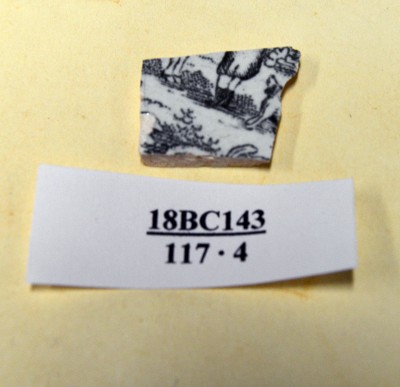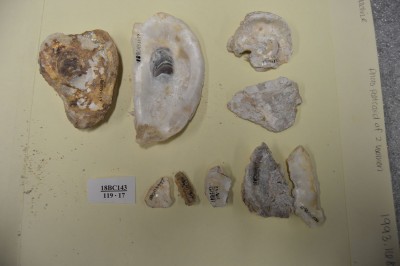Digging into the excavations of the past

Being of an archaeological background, I’ve been itching to work with the JMM’s archaeological collections since I got here. I finally got my chance; for the last few weeks I was working on writing a draft of a finding aid for the collections. This aid will help researchers who wish to study the archaeological projects that have taken place at the Lloyd Street Synagogue. The project started as any good project does, by researching, looking through the Museum’s records and making note of all the materials relating to archaeology the Museum has. I found that there are four recorded and variously documented dig seasons that took place in the basement of the Lloyd Street Synagogue between 2000 and 2010. The purpose of the LSS digs was to date and preserve key features in the basement, particularly the mikvehs and the matzoh oven. The first season was a Phase I study, meaning it was mostly a surface study, with minimal excavations. The other three seasons where Phase II studies, meaning there was more involved excavations, resulting in more material from those seasons. Feeling fairly familiar with the written materials and what years the excavations had taken place I was able to look at the artifact collections and familiarize myself with how they are cataloged in the Museum’s catalog system.

I cataloged some of the artifacts that had not been fully processed, giving me a good sense of the general condition and scope of the archaeological finds in the collection. I feel looking at archaeological artifacts offers some unique challenges that other historical objects don’t possess. Firstly, you are often times looking at an incomplete object, or fragments of objects. I had very little information to tell me what vessels pot sherds may have belonged to, and even less with glass sherds. Also the passage of time effects objects differently when they are buried for an extended period of time. Some materials like painted pottery, may benefit from this passage, as they are not exposed to light and the paint can’t fade; other materials don’t fare so well, like organic material (wood, most fabrics and paper) which often deteriorates completely, or metal which gets corroded and rusted easily by moisture and acidity in soils. There were several times when cataloging when I was not sure what I was looking at, especially when it came to metal objects.

One question that keeps bugging me is why there were oyster shells found in the Lloyd Street Synagogue (LSS). Shell fish is not kosher, so oyster shells seem a bit out of place in a synagogue. The shells also do not have any decoration on them. While we are close to the inner harbor, I don’t believe shells would be deposited here by natural means. The LSS did house a Christian congregation at one time, and was a reform synagogue for another chapter of its history. Perhaps the shells coincide with one of these periods of time, where the laws of kosher may not have been as heavily enforced.
Archaeological material is most valuable in its context. Based off where the artifacts, such as the oyster shells were found and what items were around it, possible dates of levels of the excavation and the events that took place at a site can be determined. In this manner the material culture creates and aids the telling of history. This being the case when forming the finding aid I made sure that artifacts could easily be associated with their field report and any field notes that could be found. After knowing what was in the collection I was able to compile the research I had done into a format that I hope will help future researchers easily find the materials they need.
 Blog post by Collections Intern Tamara Schlossenberg. To read more posts by and about interns click HERE.
Blog post by Collections Intern Tamara Schlossenberg. To read more posts by and about interns click HERE.
